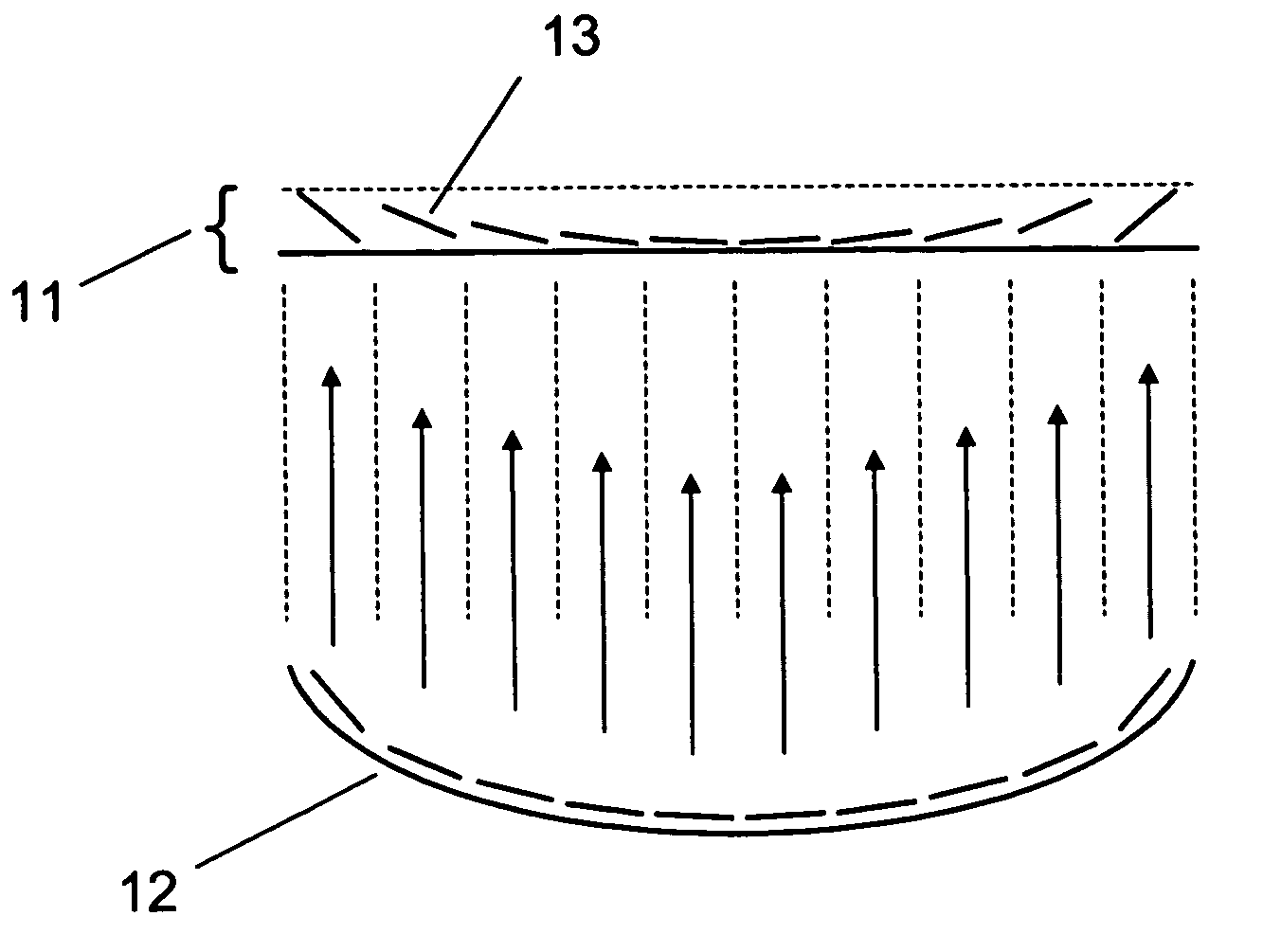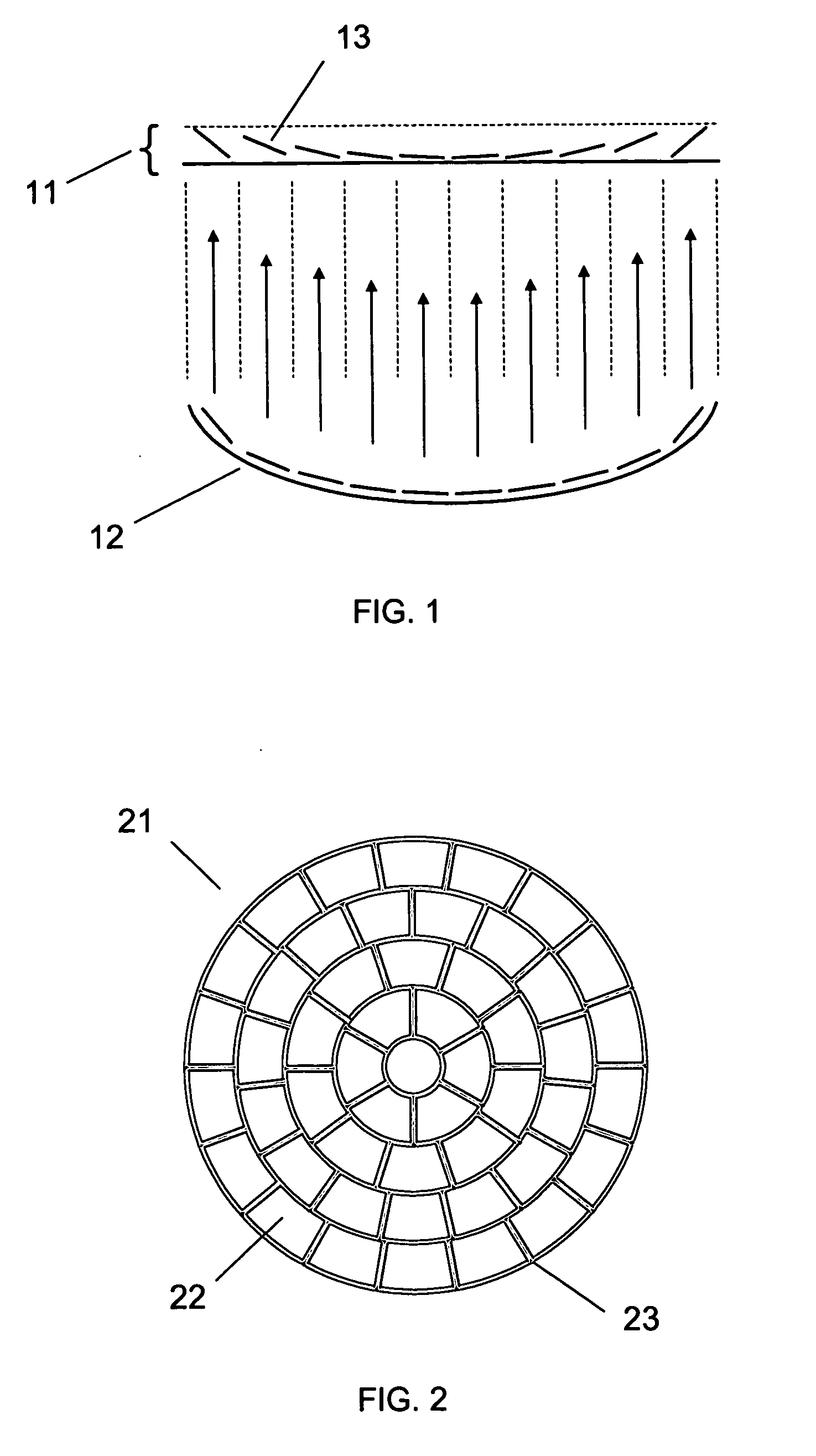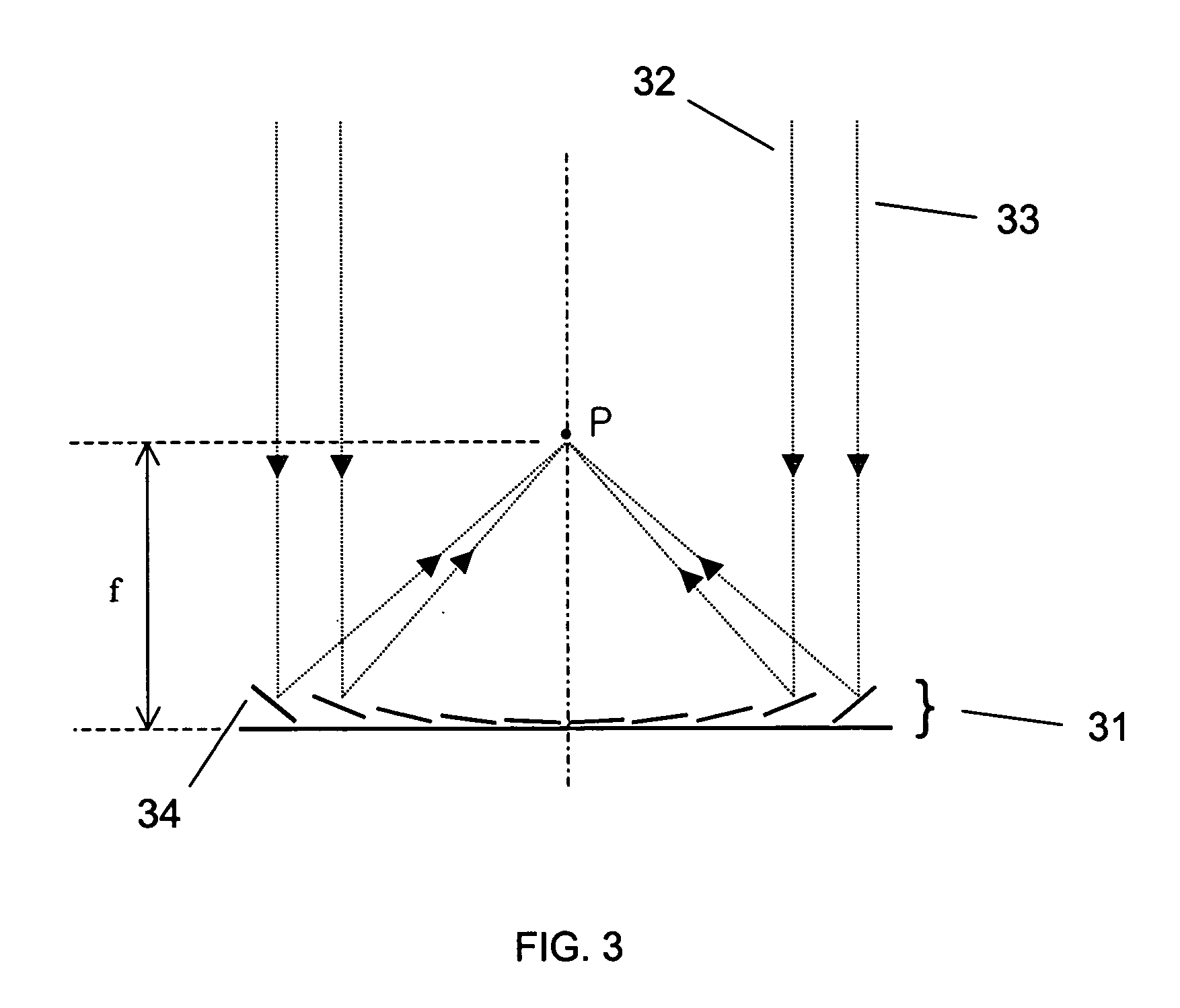Variable focal length lens comprising micromirrors with one degrees of freedom rotation and one degree of freedom translation
a technology of micromirrors and lenses, applied in the direction of optics, instruments, optical elements, etc., can solve the problems of small focal length variation, low focusing efficiency, and complex driving mechanisms to control the relative positions of refractive lenses. , to achieve the effect of increasing the effective reflective area, high reflectivity, and high reflectivity
- Summary
- Abstract
- Description
- Claims
- Application Information
AI Technical Summary
Benefits of technology
Problems solved by technology
Method used
Image
Examples
Embodiment Construction
[0031]FIG. 1 illustrates the principle of the micromirror array lens 11. There are two conditions to make a perfect lens. The first is the converging condition that all light scattered by one point of an object should converge into one point of the image plane. The second is the same phase condition that all converging light should have the same phase at the image plane. To satisfy the perfect lens conditions, the surface shape of conventional reflective lens 12 is formed to have all light scattered by one point of an objective to be converged into one point of the image plane and have the optical path length of all converging light to be same.
[0032]A micromirror array arranged in flat plane can satisfy two conditions to be a lens. Each of the micromirrors 13 rotates to converge the scattered light. Because all micromirrors 13 of the micromirror array lens 11 are arranged in a flat plane as shown in FIG. 1, the optical path length of lights converged by rotation of the micromirrors ...
PUM
 Login to View More
Login to View More Abstract
Description
Claims
Application Information
 Login to View More
Login to View More - R&D
- Intellectual Property
- Life Sciences
- Materials
- Tech Scout
- Unparalleled Data Quality
- Higher Quality Content
- 60% Fewer Hallucinations
Browse by: Latest US Patents, China's latest patents, Technical Efficacy Thesaurus, Application Domain, Technology Topic, Popular Technical Reports.
© 2025 PatSnap. All rights reserved.Legal|Privacy policy|Modern Slavery Act Transparency Statement|Sitemap|About US| Contact US: help@patsnap.com



